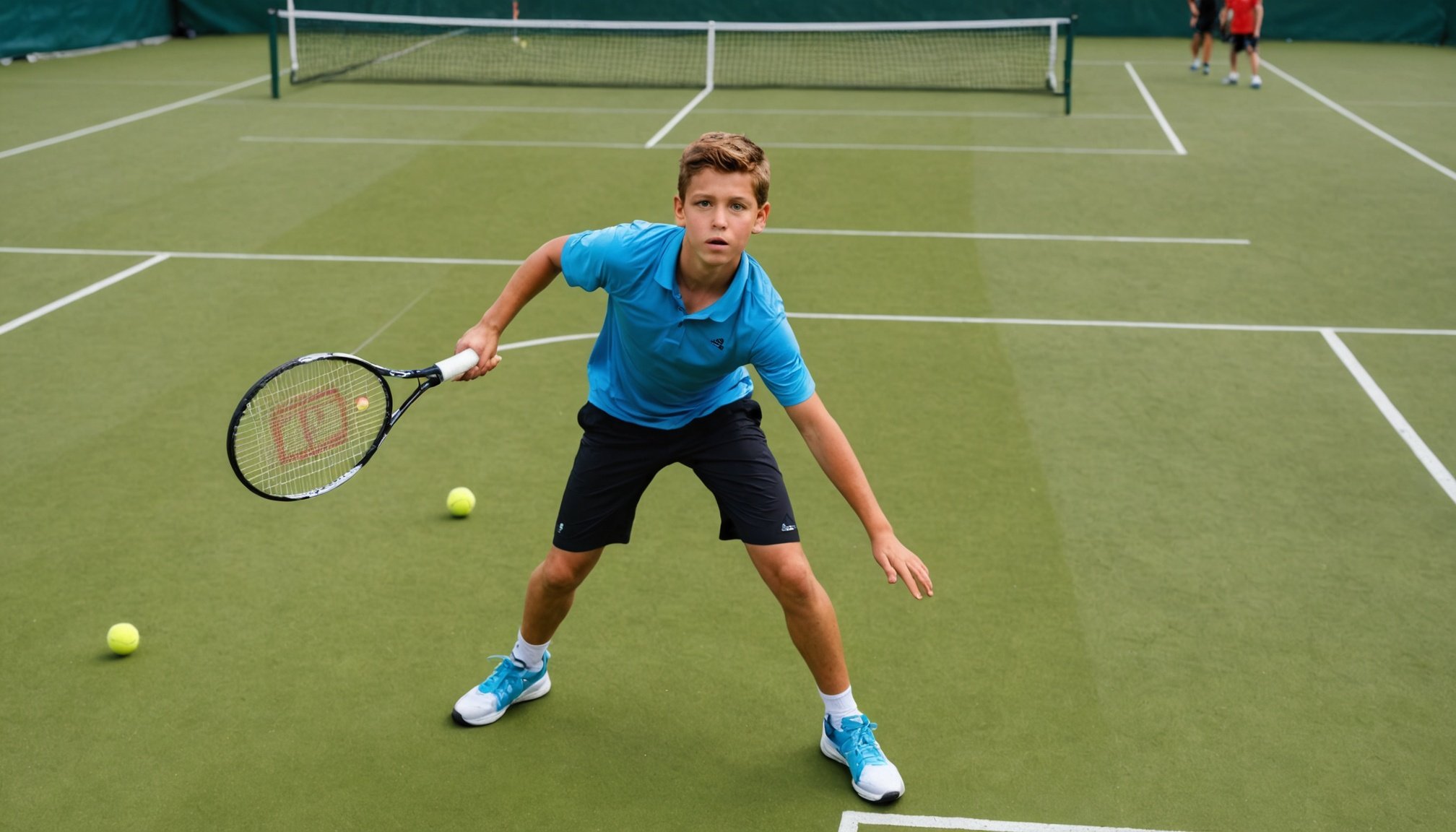Launching a Thriving Youth Tennis Training Program in the UK: Key Elements for Success
Understanding the Importance of Youth Tennis Programs
When it comes to developing a thriving youth tennis training program in the UK, it’s essential to understand the broader impact such programs can have on young people. Tennis is more than just a sport; it’s a vehicle for physical development, social interaction, and personal growth.
“Tennis is a fantastic sport for children because it combines physical activity with mental discipline and social skills,” says a tennis coach from a local UK club. “It’s an excellent way to keep kids active, healthy, and engaged.”
Also read : How can UK sports journalists maintain integrity while covering high-profile events?
Setting Clear Objectives and Strategies
Before launching any youth tennis program, it’s crucial to set clear objectives and strategies. Here are some key considerations:
Define Your Mission and Goals
- Determine what you want to achieve with your program. Is it to develop elite players, promote physical activity, or foster a love for the sport?
- Set both short-term and long-term goals, such as increasing participation rates, improving player skills, and building a strong community.
Develop a Comprehensive Curriculum
- Create a structured curriculum that includes various aspects of tennis coaching, such as technique, tactics, and physical conditioning.
- Incorporate different levels of play, including mini tennis for younger children, to ensure the program is inclusive and engaging for all ages.
Secure Funding and Resources
- Identify potential funding sources, such as local councils, sports grants, and sponsorships.
- Ensure you have the necessary resources, including courts, equipment, and qualified coaches.
Building a Strong Coaching Team
The success of any youth tennis program heavily depends on the quality of its coaching team.
Also read : How do injuries affect the long-term careers of athletes in the UK?
Qualifications and Experience
- Hire coaches who are certified by recognized bodies such as the Lawn Tennis Association (LTA) in the UK.
- Look for coaches with experience in working with children and young people.
Coaching Styles and Philosophies
- Encourage coaches to adopt a positive and supportive coaching style that focuses on player development rather than just winning.
- Foster a culture of continuous learning and improvement among coaches.
### Example of a Coaching Team Profile
| Coach Name | Qualifications | Experience |
|
|----------------|
|
| John Smith | LTA Level 3 Coach | 10 years coaching children |
| Jane Doe | LTA Level 2 Coach | 5 years coaching mini tennis |
| Bob Johnson| LTA Level 4 Coach | 15 years coaching at club level |
Creating an Engaging and Inclusive Environment
An engaging and inclusive environment is vital for keeping young people interested and motivated.
Variety of Activities
- Offer a range of activities beyond just playing tennis, such as fitness sessions, team-building exercises, and social events.
- Incorporate different formats like team tennis, doubles, and singles to keep the program fresh and exciting.
Use of Technology and Media
- Utilize social media platforms to promote the program, share success stories, and provide updates.
- Consider using digital tools for coaching, such as video analysis software, to enhance player development.
Parent and Community Involvement
- Encourage parents to get involved through volunteering, spectating, or even participating in parent-child tennis sessions.
- Build relationships with local schools and community groups to promote the program and attract new participants.
Ensuring Physical and Mental Well-being
Tennis is a physically demanding sport, and ensuring the physical and mental well-being of young players is crucial.
Physical Conditioning
- Incorporate physical conditioning sessions into the program to improve fitness levels and reduce the risk of injury.
- Ensure players have adequate rest and recovery time to avoid burnout.
Mental Health Support
- Provide access to mental health support and resources to help players manage pressure and stress.
- Foster a positive team culture that promotes mental well-being and resilience.
Monitoring Progress and Evaluating Success
Regularly monitoring progress and evaluating the success of the program is essential for making improvements.
Tracking Participation and Activity Levels
- Use data to track participation rates, activity levels, and player development.
- Compare your program’s metrics with national averages and benchmarks set by organizations like Sport England.
Feedback Mechanisms
- Establish feedback mechanisms to gather insights from players, parents, and coaches.
- Use this feedback to make adjustments to the program and improve overall satisfaction.
### Example of a Progress Tracking Table
| Metric | Baseline | 6 Months | 1 Year | 2 Years |
|
|-----------|
|----------|
|
| Participation Rate | 50 players | 70 players | 100 players | 150 players |
| Average Minutes Played | 30 minutes | 45 minutes | 60 minutes | 75 minutes |
| Player Skill Levels | Beginner | Intermediate | Advanced | Elite |
| Feedback Satisfaction | 70% | 80% | 85% | 90% |
Practical Insights and Actionable Advice
Here are some practical insights and actionable advice for launching a thriving youth tennis training program:
Start Small and Scale Up
- Begin with a small group of dedicated players and gradually expand the program as it grows in popularity.
- Ensure you have the necessary infrastructure and resources before scaling up.
Collaborate with Local Schools
- Partner with local schools to integrate tennis into their physical education programs.
- Offer after-school tennis clubs and activities to reach a broader audience.
Engage with the Community
- Host community events and tournaments to engage with local residents and promote the program.
- Use local media outlets to publicize the program and attract new participants.
Focus on Long-Term Development
- Prioritize long-term player development over short-term success.
- Encourage players to adopt healthy lifestyles and active lives beyond their tennis careers.
Launching a thriving youth tennis training program in the UK requires careful planning, a strong coaching team, an engaging and inclusive environment, and a focus on physical and mental well-being. By setting clear objectives, monitoring progress, and continuously evaluating and improving the program, you can create a vibrant and successful tennis community that benefits young people in numerous ways.
As Steve Brown, CEO of the International Schools Partnership, emphasizes, “Creating learning experiences that build confidence first and foremost is the most powerful thing we can do for students.” This principle applies equally well to sports programs, where confidence and self-belief are key to player development and long-term success.
By following these guidelines and staying committed to your mission, you can help young tennis players in the UK develop not only their tennis skills but also the physical, social, and mental attributes that will serve them well throughout their lives.











